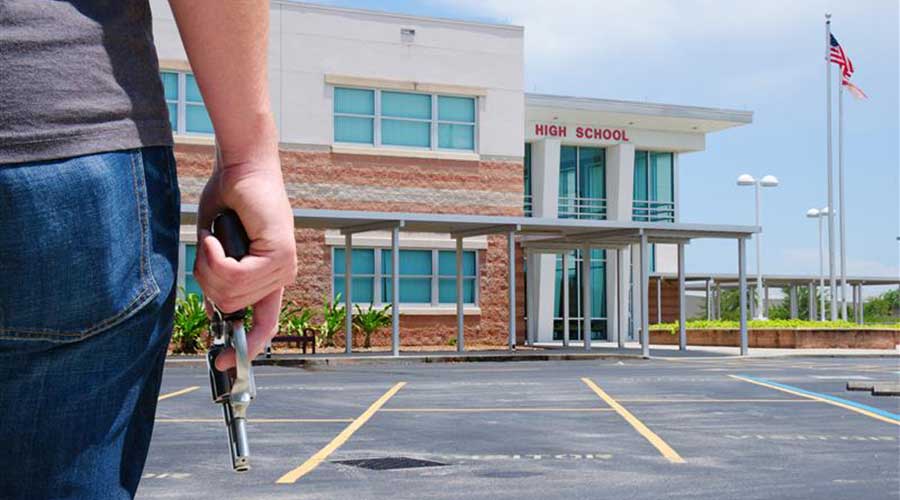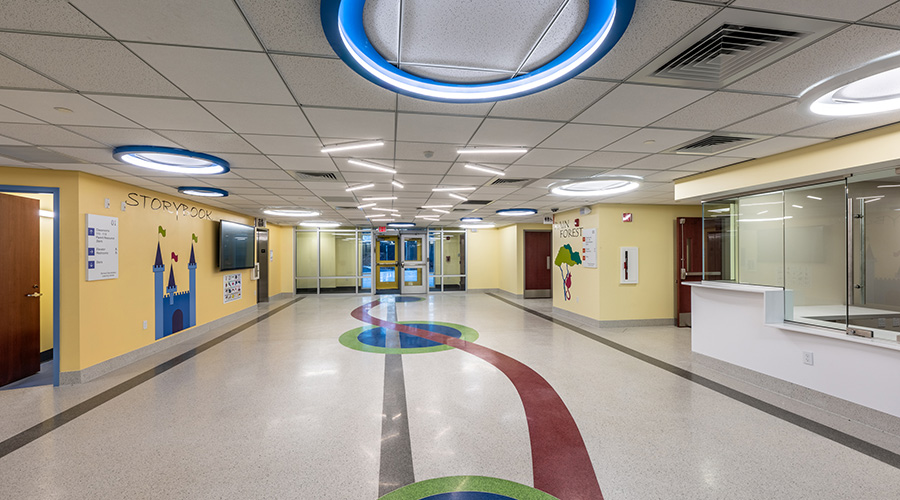Beating the Odds
Twelve new schools and 12,000 new students every year. Somehow, the Las Vegas Schools' maintenance department is meeting it's growing challenges
The challenges that face the maintenance department at the Clark County (Nev.) School District are daunting, to say the least:
- The district, which includes the city of Las Vegas, contains 7,910 square miles.
- Student enrollment is growing by about 12,000 students annually, from 111,000 in 1990 to 292,000 this year.
- The department is responsible for 360 facilities, including administrative buildings, with an average of 12 new schools opening each year.
Given the maintenance and engineering workload created by these challenges, most people would understand if Randy Shingleton, the department’s director of maintenance, devoted his energy to simply achieving short-term goals. But in his two years on the job, he has aimed for more.
“I wanted to change the perception of the maintenance organization from one that is not capable of doing things to support the schools to one that is,” he says. This dual challenge is immense, but so far, Shingleton is beating the odds and succeeding.
To do so, the department in part has incorporated strategies more common in industrial settings than in school districts.
Assessing Priorities
A large part of the department’s challenges arises from the sheer size of the school district and the workload created by its many facilities.
“The fact is, we don’t have enough people to do what we need to do,” Shingleton says. The responsibilities of the 380-person department range from the HVAC, plumbing, electrical and roofing systems to security systems, asphalt and concrete repair, and energy-monitoring systems. Shingleton points to the two-month backlog of repairs for closed-circuit television cameras as an example of the workload.
“When one or two cameras are out, that’s an issue,” he says but adds that the priority has to go to schools that might have 15 or 20 cameras out of order.
The oppressive desert heat also plays a role in the maintenance backlog, especially for the district’s 12 chiller technicians.
“You have a day when it gets up to 120 degrees, and it doesn’t take long for them to get overwhelmed” with calls about chiller problems, he says.
Divide and Conquer
Shingleton has instituted a number of tactics to help technicians handle their workloads in buildings spread out over such a vast area.
The first tactic — still being instituted — is to decentralize maintenance operations into five regions. The process is designed to move technicians, parts and equipment closer to the schools that require service. Part of the process is creating a mobile maintenance van to serve each region, Shingleton says. Three are operating now, and two more are on the way.
Each van — actually, the flatbed of an 18-wheel semi — brings stockpiles of parts and equipment to one school for a week or so. The arrangement enables technicians to focus their time and energy on the neediest schools without having to drive around for materials.
To further target the district’s most critical maintenance needs, Shingleton also has created zone crews. The teams of seven workers — an HVAC technician, a carpenter, an electrician and several apprentices — focus on the district’s 40 or so oldest schools. This arrangement also allows the department to put people near the facilities that need their help the most. Four zone crews are operating and one more is expected to begin operations soon, he says.
To support these and other efforts, Shingleton has proposed an expansion of the department’s staff.
“This past year, we requested 140 new FTEs (full-time equivalencies) to bring us closer to the staffing levels we formulated, to keep up with growth and to continue our efforts to deconsolidate services through our zone crew and mobile maintenance van concepts,” he says. “We were approved for 57 new FTEs this past July. We are in the process of hiring for these positions. These positions will allow us to make advances with preventive maintenance, add one additional zone and mobile maintenance van each, and add a building engineer for the one new high school that opened in August.”
And to help technicians work more efficiently, the department is placing greater emphasis on proper training.
“We have been trying to increase our support for training in the last few years, asking for more of a budget in this area,” Shingleton says. “We also are adding requirements to new-school specifications that require training for our personnel from the manufacturer of equipment installed in our new schools and renovation projects.”
Finally, to support field technicians and to give managers better control of work planning, the department is installing a new computerized maintenance management system (CMMS) after a decade-long process of replacing the existing legacy CMMS, Shingleton says.
The software implementation should be completed in 2007.
Focusing on Quality
Shingleton’s efforts to maximize his department’s efficiency have included non-traditional tactics. For example, in March 2004, Shingleton’s department, along with four others in the district, received certification under ISO 9001:2000. The quality management standards, whose roots are in industry, have been revamped in recent years to apply to the operations of all kinds of organizations.
Organizations that qualify must demonstrate a commitment to quality by, among other steps, establishing a quality system, documenting it, carrying out quality planning, performing management reviews, and providing a quality infrastructure and personnel.
The district’s effort began at the direction of a previous district superintendent, and it has helped the maintenance department focus on concrete steps to improve the quality of their operations and service, Shingleton says. It also has bolstered his efforts to reshape the image of the department within the district.
The overall effort is “a difficult struggle because it takes money and manpower,” Shingleton says. “It’s a tough row to hoe.” But it also is essential.
“We want to show the administration above us that we are capable of doing these things for the district and the students,” he says. “Every last person in the department understands that what matters most is helping the students do the learning and the teachers do the teaching.”
All Eyes on Energy Savings
As rising energy prices continue to put pressure on the budgets of K-12 school districts nationwide, maintenance and engineering departments are looking far and wide for strategies that will help their organizations minimize energy use.
Randy Shingleton, director of maintenance for the Clark County (Nev.) School District, says his district — which includes the rapidly expanding city of Las Vegas — has undertaken several projects that are designed to help monitor energy use and cut energy and utility costs:
-
The standardization of the district’s building automation systems, which has enabled technicians to remotely monitor energy use of widely separated facilities more efficiently.
-
Facility lighting retrofits that replaced existing T-12 lamps to with energy-efficient T8 lamps.
-
Pilot installations of T5 lamps, which are designed to use even less energy than T8 lamps.
-
Trail applications of reflective roof coatings, which are formulated to reduce buildings’ cooling loads. Workers applied the coatings to three portable classrooms and left three others uncoated. “We found great energy savings” from using the coatings, Shingleton says. “We’ll use them when we do recoatings.”
-
The installation of waterless urinals in many schools, which can help facilities cut water and sewer costs — an especially enticing benefit in the water-challenged Western United States.
— Dan Hounsell
|
Related Topics:











